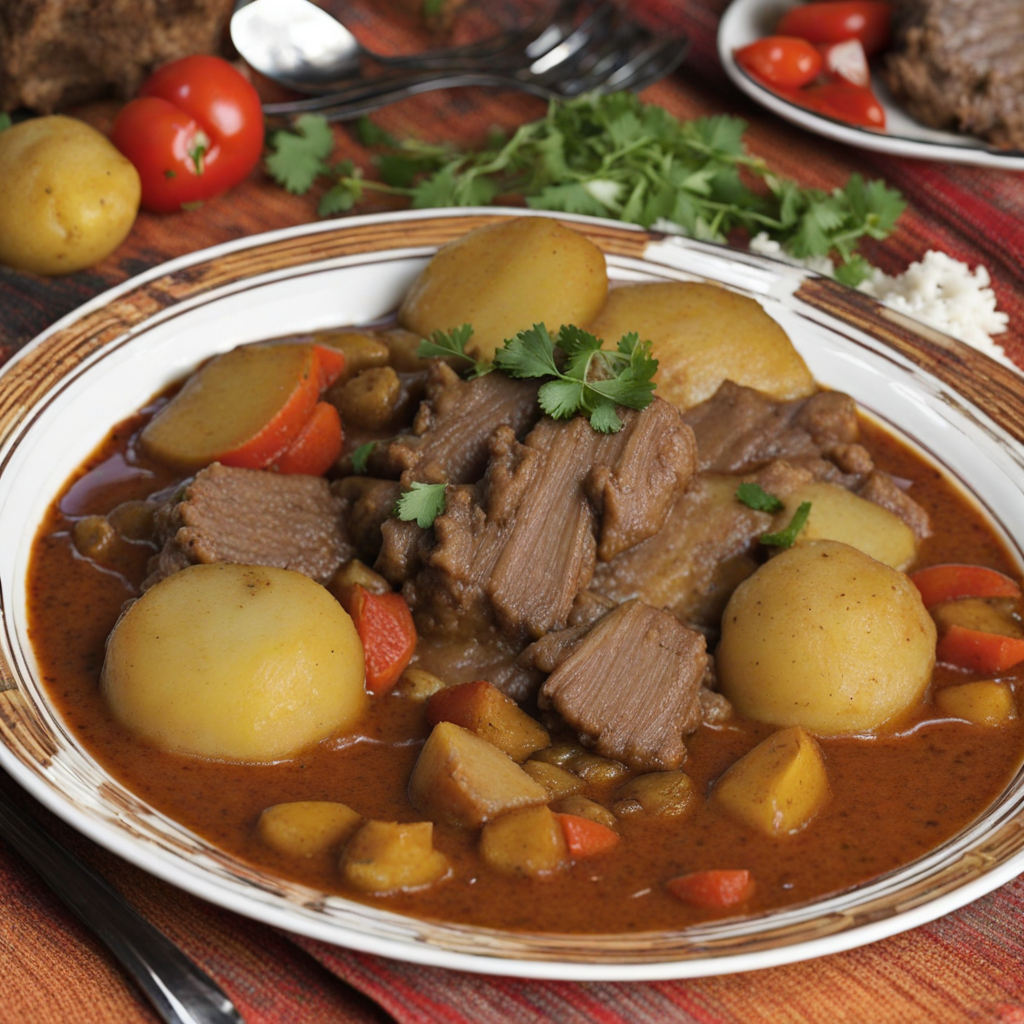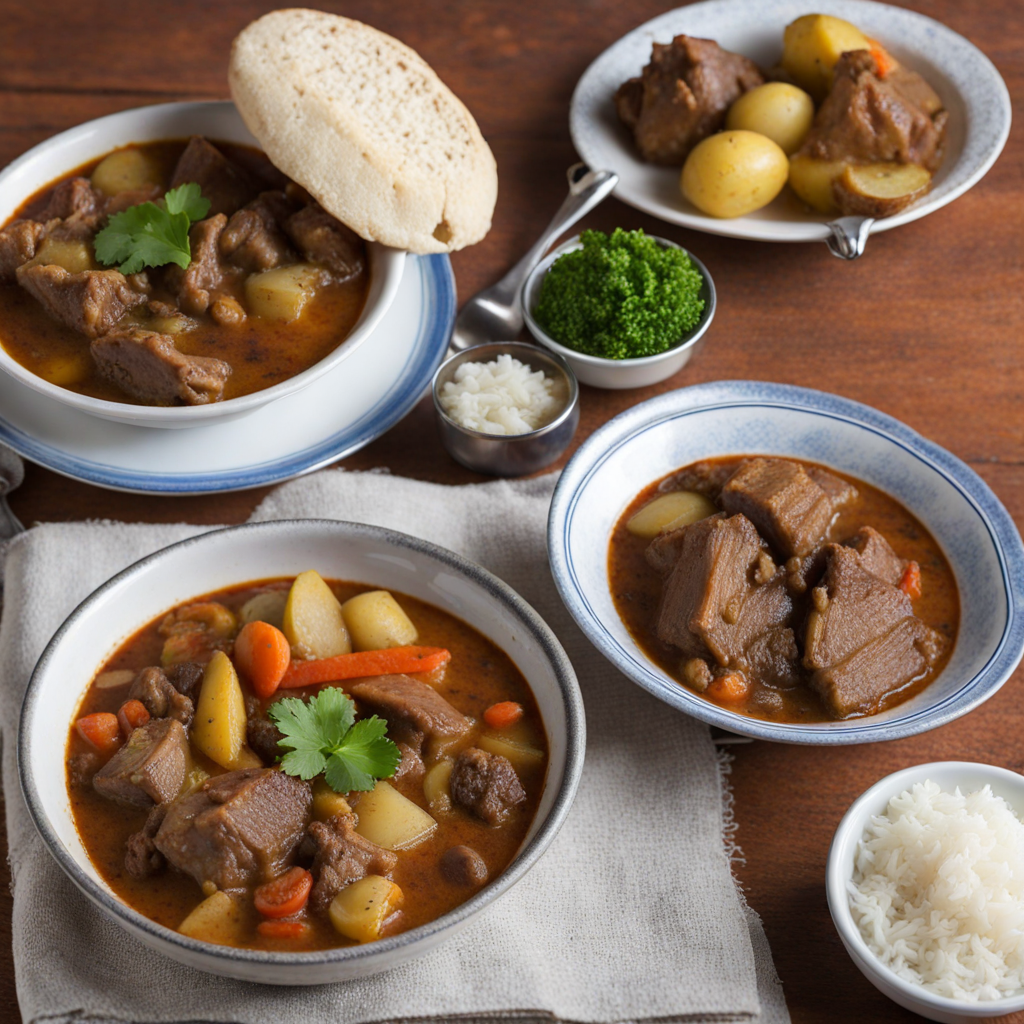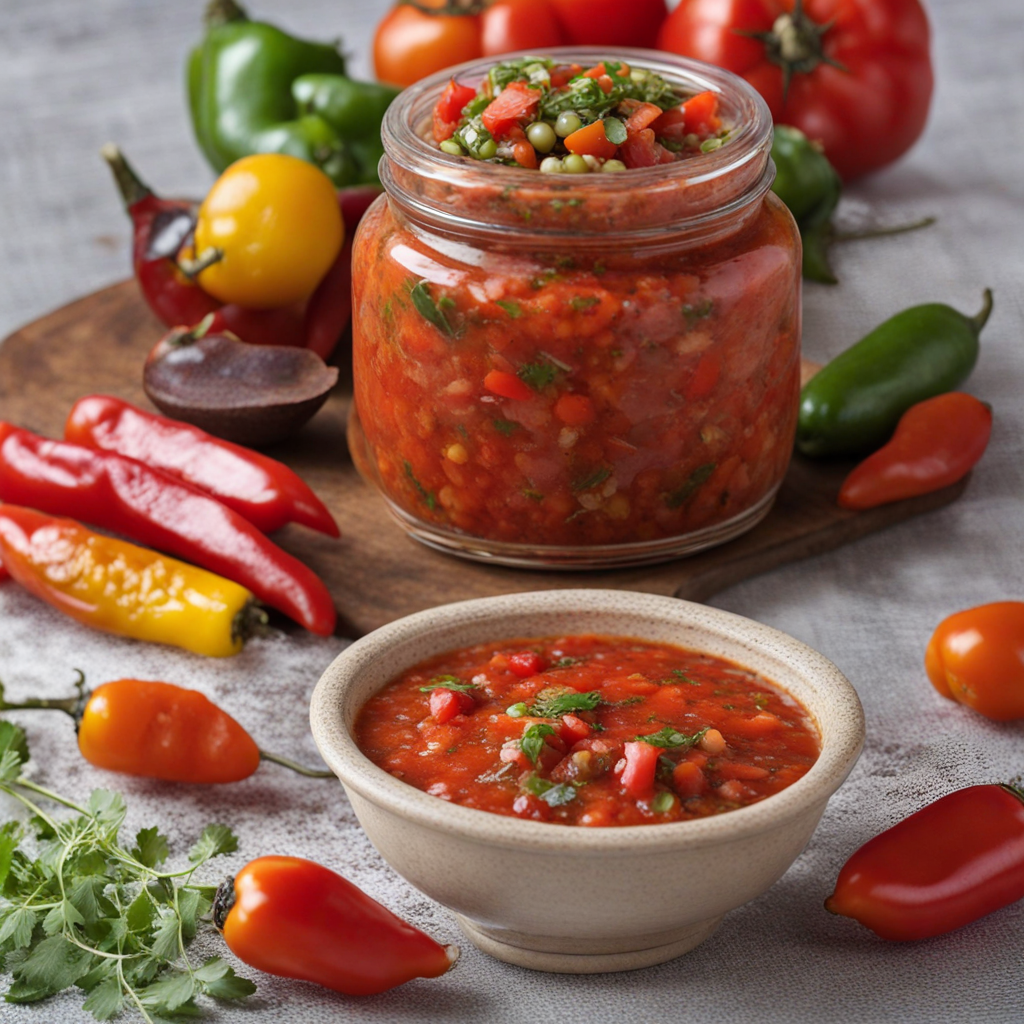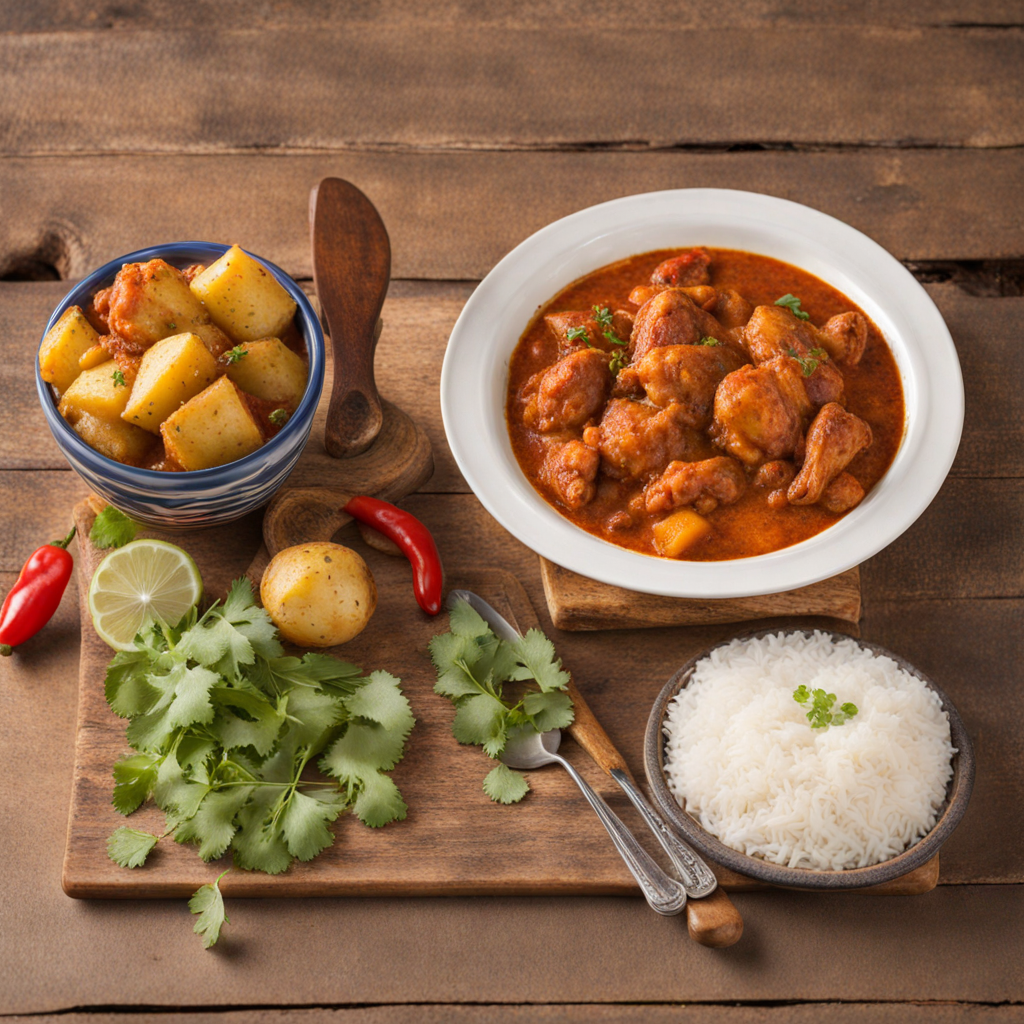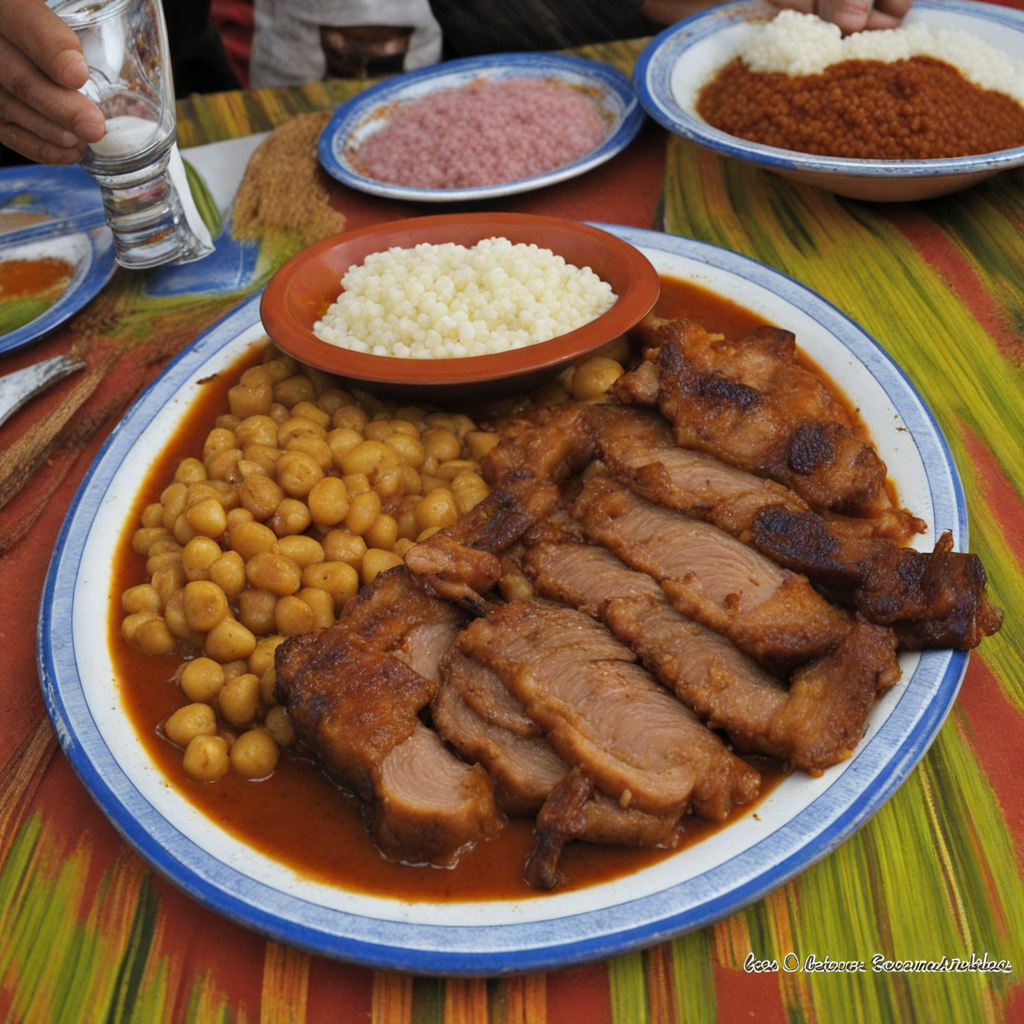Thimpu de Cordero
Thimpu de Cordero is a delectable Bolivian dish that showcases the rich culinary traditions of the Andes. It features tender lamb, marinated with a blend of aromatic spices and herbs that reflect the vibrant flavors of the region. The lamb is slow-cooked to perfection, allowing it to absorb the savory notes of cumin, garlic, and paprika, resulting in a melt-in-your-mouth experience that is both hearty and comforting. The dish is often complemented by a variety of colorful vegetables, which are sautéed to enhance their natural sweetness, creating a harmonious balance of flavors on the plate. Accompanying the Thimpu de Cordero is typically a serving of traditional Bolivian sides, such as fluffy quinoa or fluffy rice, which serve as a perfect canvas to soak up the rich, savory juices of the lamb. Another common accompaniment is llajwa, a spicy sauce made from tomatoes and ají peppers, adding a delightful kick to each bite. The combination of textures—from the tender meat to the crisp vegetables—creates a satisfying experience that is both rustic and refined. Thimpu de Cordero is not just a meal; it's a celebration of Bolivian culture and culinary heritage. Often enjoyed during family gatherings or special occasions, this dish brings people together around the table, inviting them to share in its warmth and flavor. With each bite, you are transported to the Andean highlands, where the rich agricultural landscape contributes to the freshness of the ingredients. Whether you are discovering Bolivian cuisine for the first time or looking to expand your culinary horizons, Thimpu de Cordero promises to be a memorable and delicious adventure.
How It Became This Dish
Thimpu de Cordero: A Culinary Journey Through Bolivia’s Heritage In the heart of the Andean mountains, where the air is crisp and the landscapes are vibrant, lies Bolivia, a country steeped in rich cultural heritage and diverse culinary traditions. Among the many dishes that grace the tables of Bolivian families, "Thimpu de Cordero" stands out not just for its robust flavors but also for its deep cultural significance. This dish, a lamb stew, encapsulates the essence of Bolivian culinary practices, reflecting the region's agricultural bounty, indigenous traditions, and historical influences. Origins of Thimpu de Cordero The roots of Thimpu de Cordero can be traced back to the Aymara and Quechua civilizations that flourished in the Andean region long before the arrival of Spanish colonizers in the 16th century. These indigenous groups relied heavily on the unique landscape, which provided them with a variety of crops such as potatoes, quinoa, and corn, as well as livestock, including llamas and sheep. Lamb, specifically, has been a staple in the Andean diet for centuries. The introduction of sheep to the region is often attributed to the Spanish, who brought them over during the colonial era. Although sheep were not native to the Andes, they adapted well to the high altitudes and became an integral part of the local agriculture. This incorporation of European livestock into indigenous cultures exemplifies the blending of two worlds – a culinary fusion that would become characteristic of Bolivian cuisine. Ingredients and Preparation At its core, Thimpu de Cordero is a simple yet hearty stew that highlights the flavors of lamb and a variety of local vegetables. Traditional recipes often include ingredients such as potatoes, carrots, and corn, which are staples in Bolivian kitchens. The dish is seasoned with a mix of indigenous spices and herbs, including cumin, garlic, and cilantro, which provide a unique flavor profile that differentiates it from other lamb dishes around the world. The preparation of Thimpu de Cordero involves slow-cooking the lamb until it is tender, allowing the flavors to meld and intensify. This cooking technique is reflective of the Andean approach to food, where patience and a connection to the land are paramount. The dish is typically served with rice or bread, making it a satisfying meal that brings families together. Cultural Significance Thimpu de Cordero is more than just a meal; it is a dish imbued with cultural significance and community ties. In Bolivia, food is often a central aspect of social gatherings, celebrations, and religious ceremonies. Thimpu de Cordero, with its roots in indigenous practices, serves as a symbol of communal identity. It is commonly prepared for family gatherings, festivities, and special occasions, where it fosters a sense of belonging and connection among those who share it. Additionally, the preparation of Thimpu de Cordero often involves collaboration among family members, echoing the traditional practices of sharing labor and resources in Andean communities. It is not uncommon for relatives to come together to make this dish, passing down recipes and techniques from one generation to the next. This practice of communal cooking reinforces familial bonds and serves as an important method of cultural transmission. Evolution Over Time As Bolivia has evolved, so too has Thimpu de Cordero. The dish has adapted to reflect the changing dynamics of Bolivian society, including urbanization, globalization, and the influence of modern culinary trends. In urban areas, where access to a broader range of ingredients has become available, chefs and home cooks alike have experimented with variations of the traditional recipe. Some have incorporated international flavors or alternative ingredients, such as spices from Asian cuisines, to create contemporary interpretations of Thimpu de Cordero. Despite these modern adaptations, the core of the dish remains the same, rooted in its indigenous heritage. Many Bolivians take pride in the authenticity of their traditional recipes, ensuring that the flavors of their ancestors are preserved even as the culinary landscape evolves. This balancing act between tradition and innovation is a hallmark of Bolivian cuisine, reflecting the resilience and adaptability of its people. The Global Context In recent years, as Bolivian cuisine has gained recognition on the global stage, dishes like Thimpu de Cordero have begun to find their way into the menus of international restaurants. Chefs worldwide are increasingly drawn to the bold flavors and unique ingredients of Bolivian cooking, leading to a resurgence of interest in traditional dishes. Thimpu de Cordero, with its rich history and cultural significance, serves as a representative of Bolivia’s culinary identity in this global context. The increasing popularity of Bolivian food has also encouraged the preservation of indigenous practices and recipes, as chefs and home cooks strive to honor the cultural heritage that underpins these culinary traditions. In this way, Thimpu de Cordero not only serves as a delicious meal but also as a vessel for cultural pride and heritage. Conclusion Thimpu de Cordero is more than just a stew; it is a reflection of Bolivia's intricate tapestry of history, culture, and community. From its indigenous roots to its evolution in modern kitchens, this dish tells the story of a people whose culinary practices have withstood the test of time. As Bolivia continues to navigate the complexities of globalization and cultural exchange, Thimpu de Cordero remains a beloved emblem of national pride, a dish that brings people together, and a testament to the enduring legacy of Andean cuisine. As you savor a bowl of Thimpu de Cordero, you are not just enjoying a meal; you are partaking in a rich narrative that spans centuries, celebrating the resilience and vibrancy of Bolivian culture, and embracing a culinary tradition that continues to thrive in the hearts and homes of its people.
You may like
Discover local flavors from Bolivia


